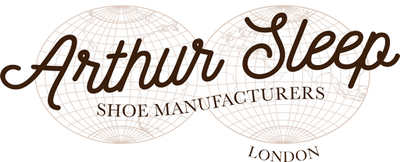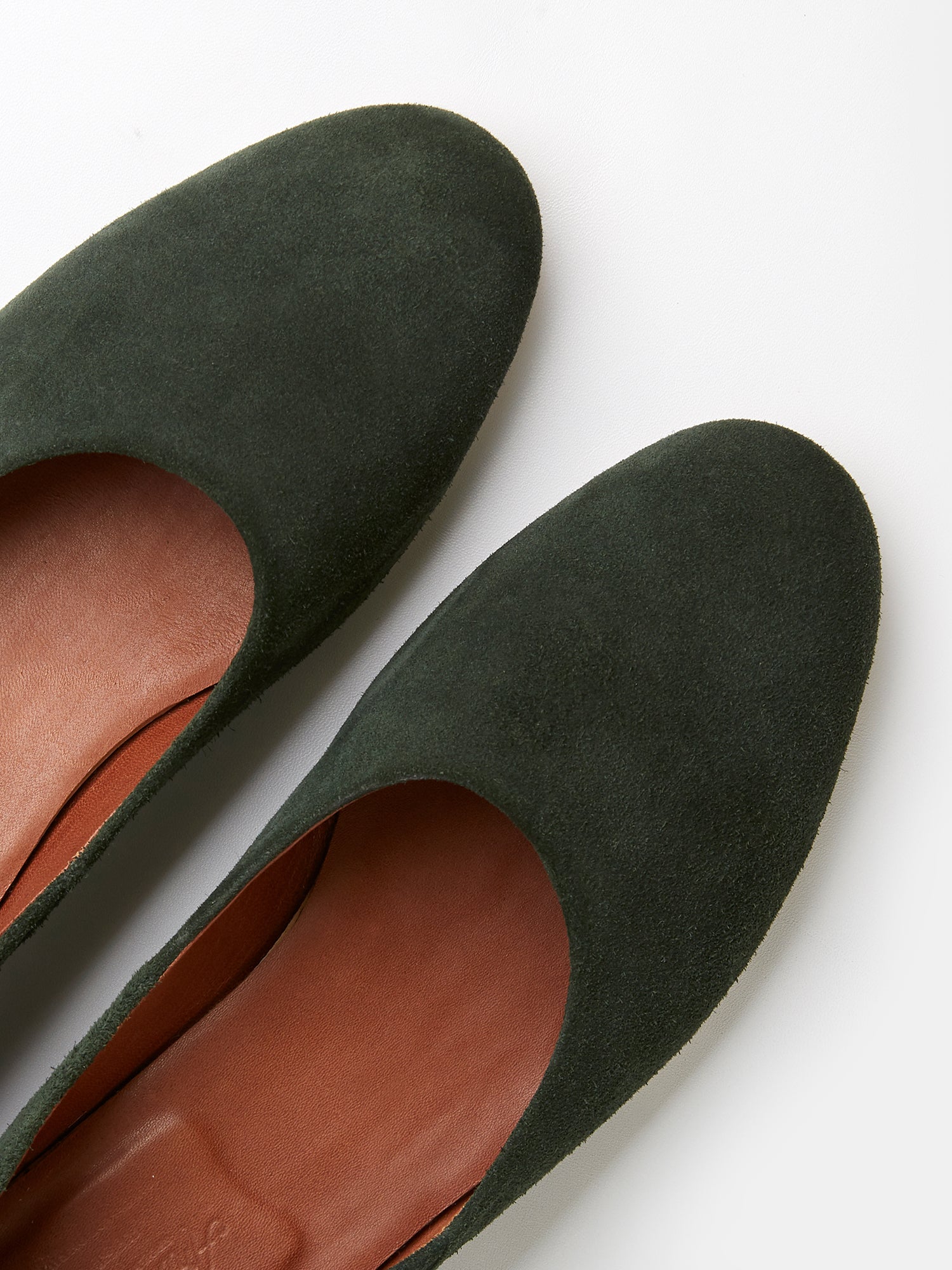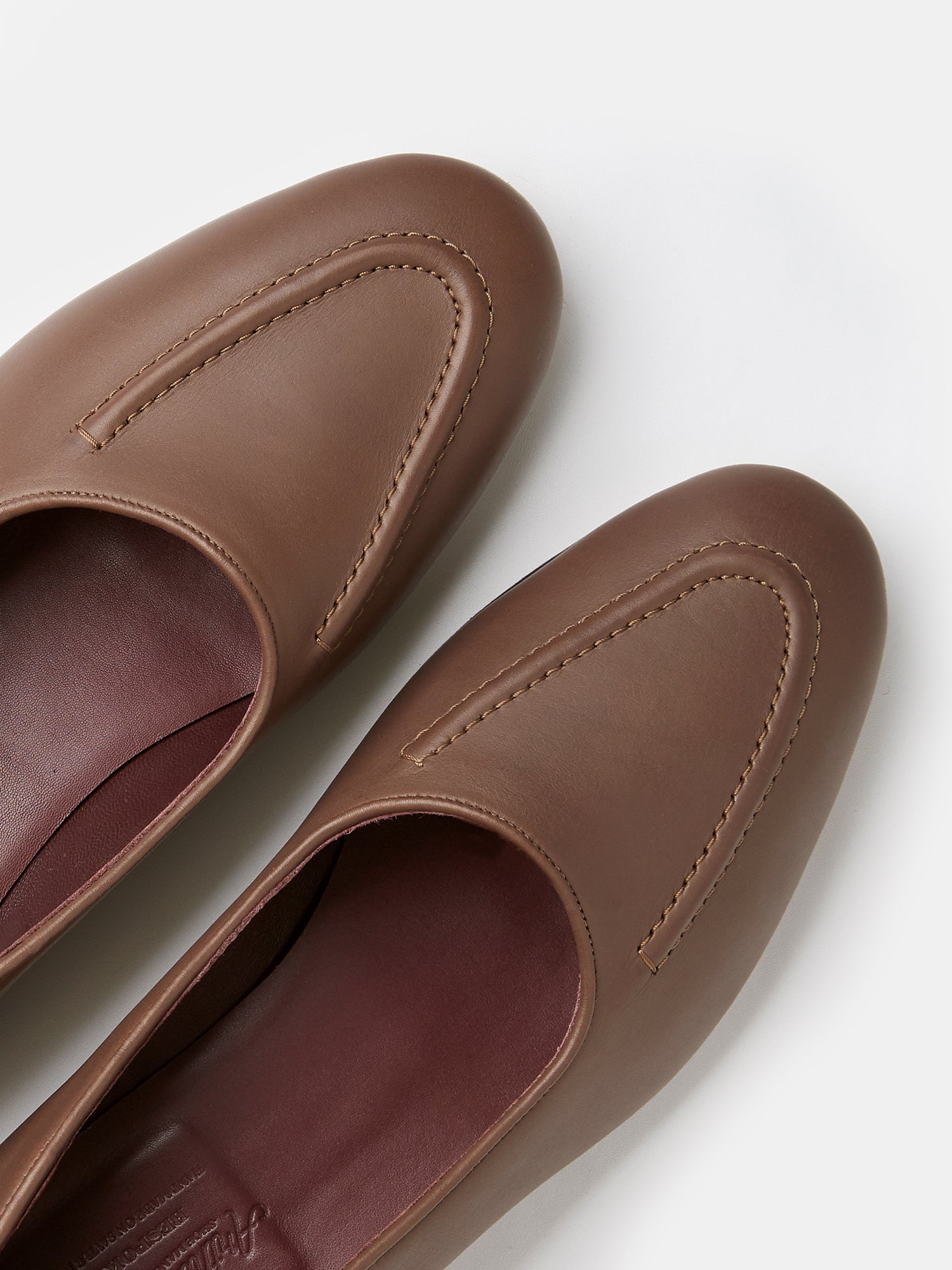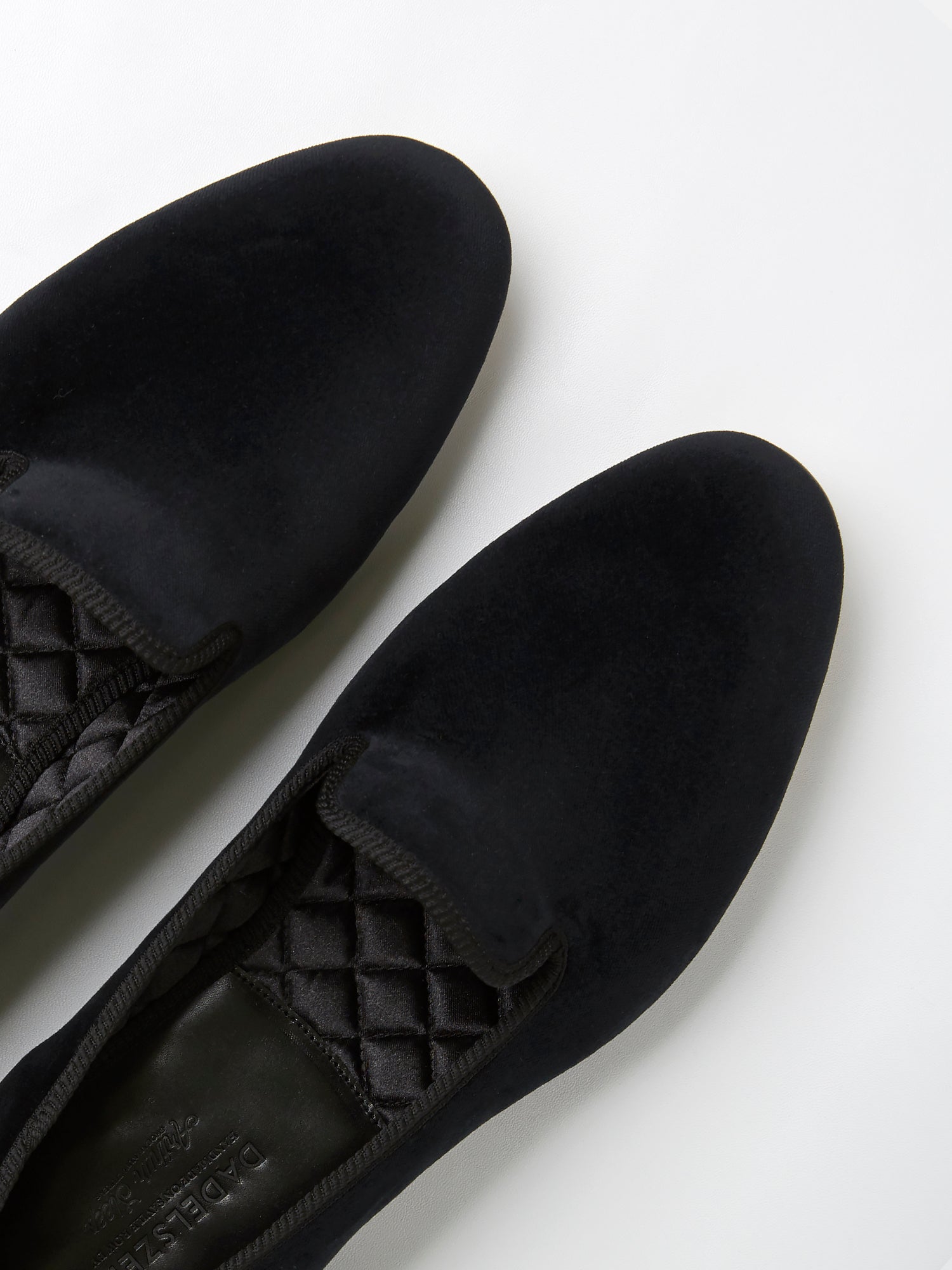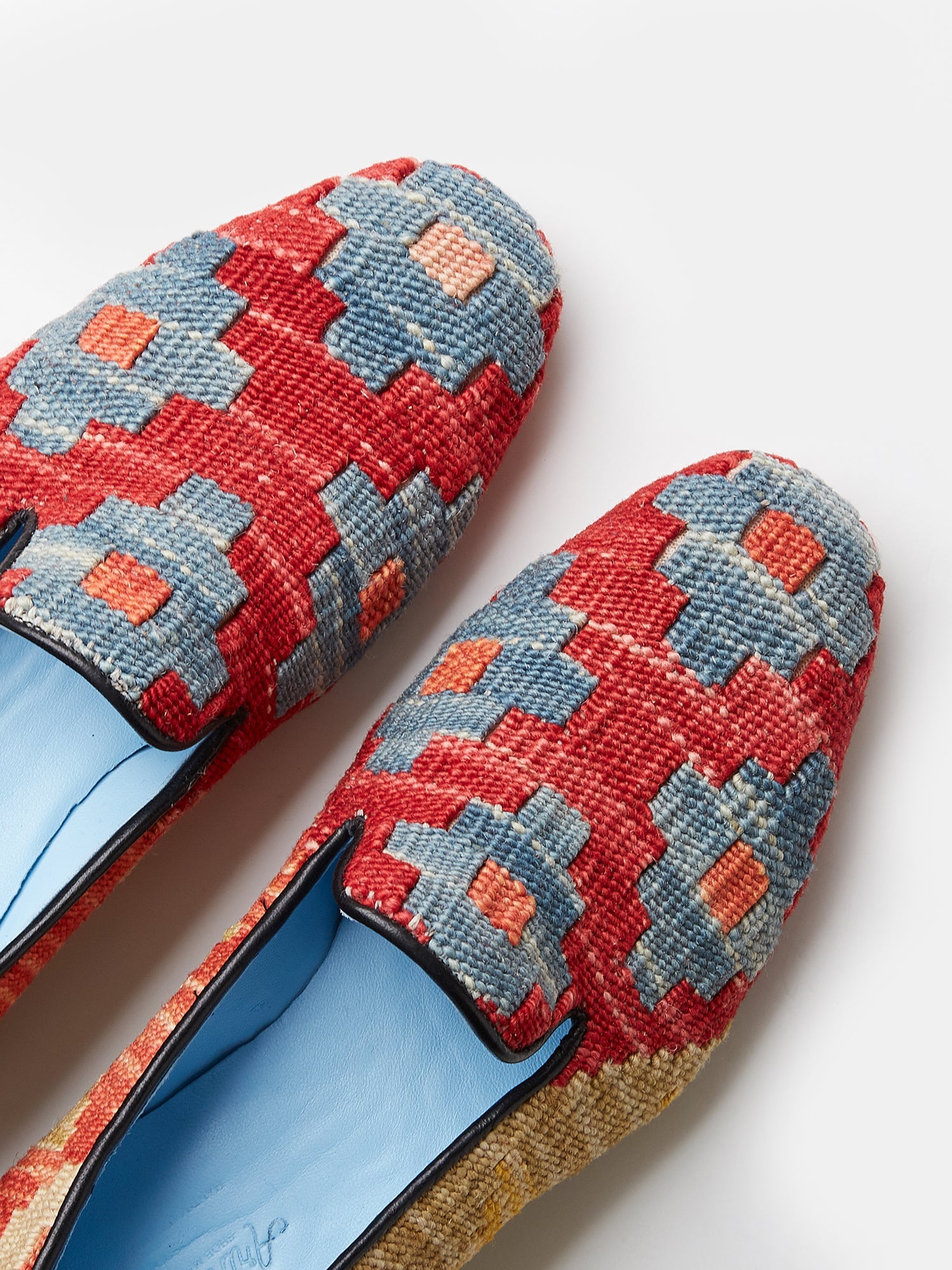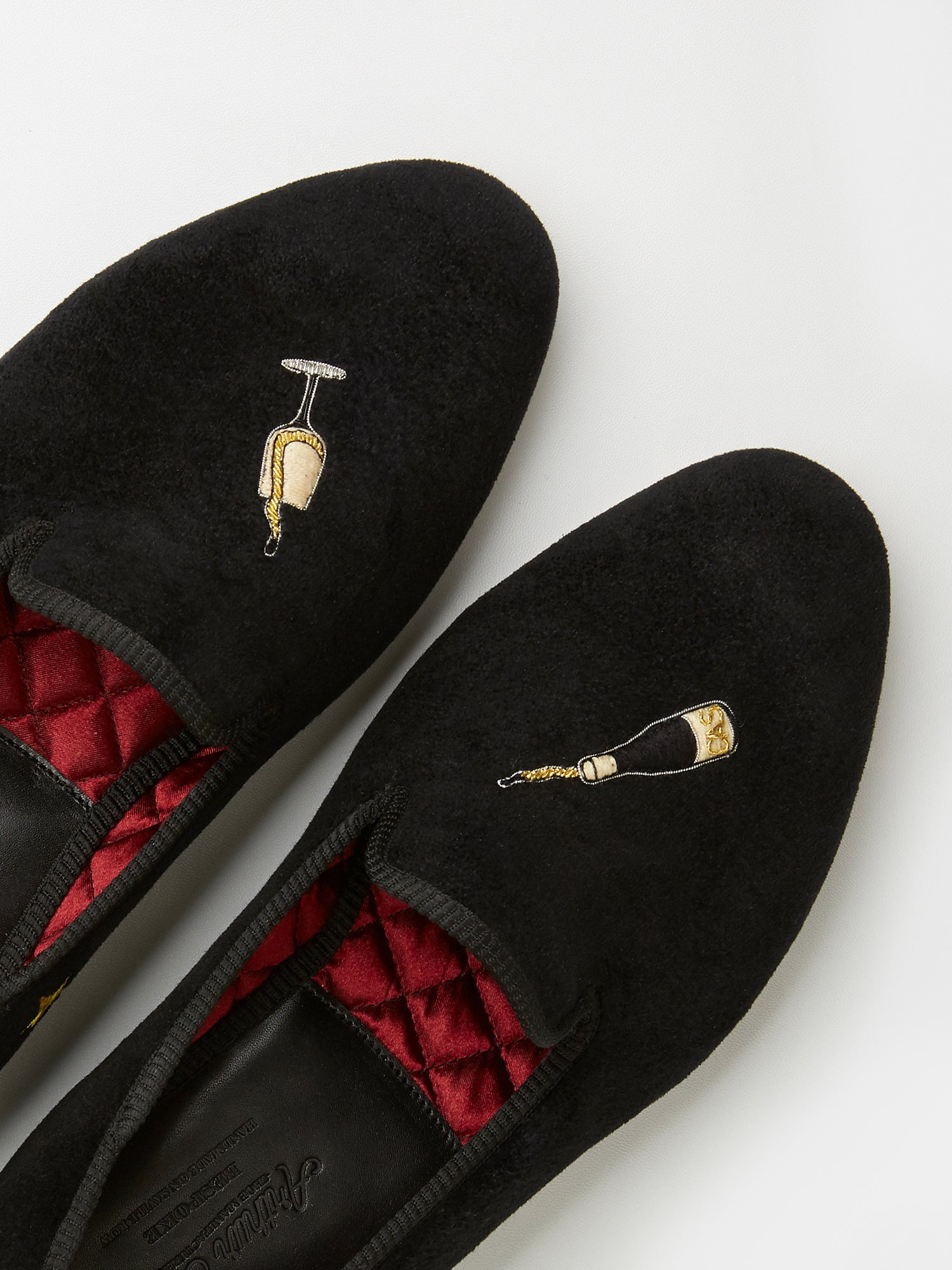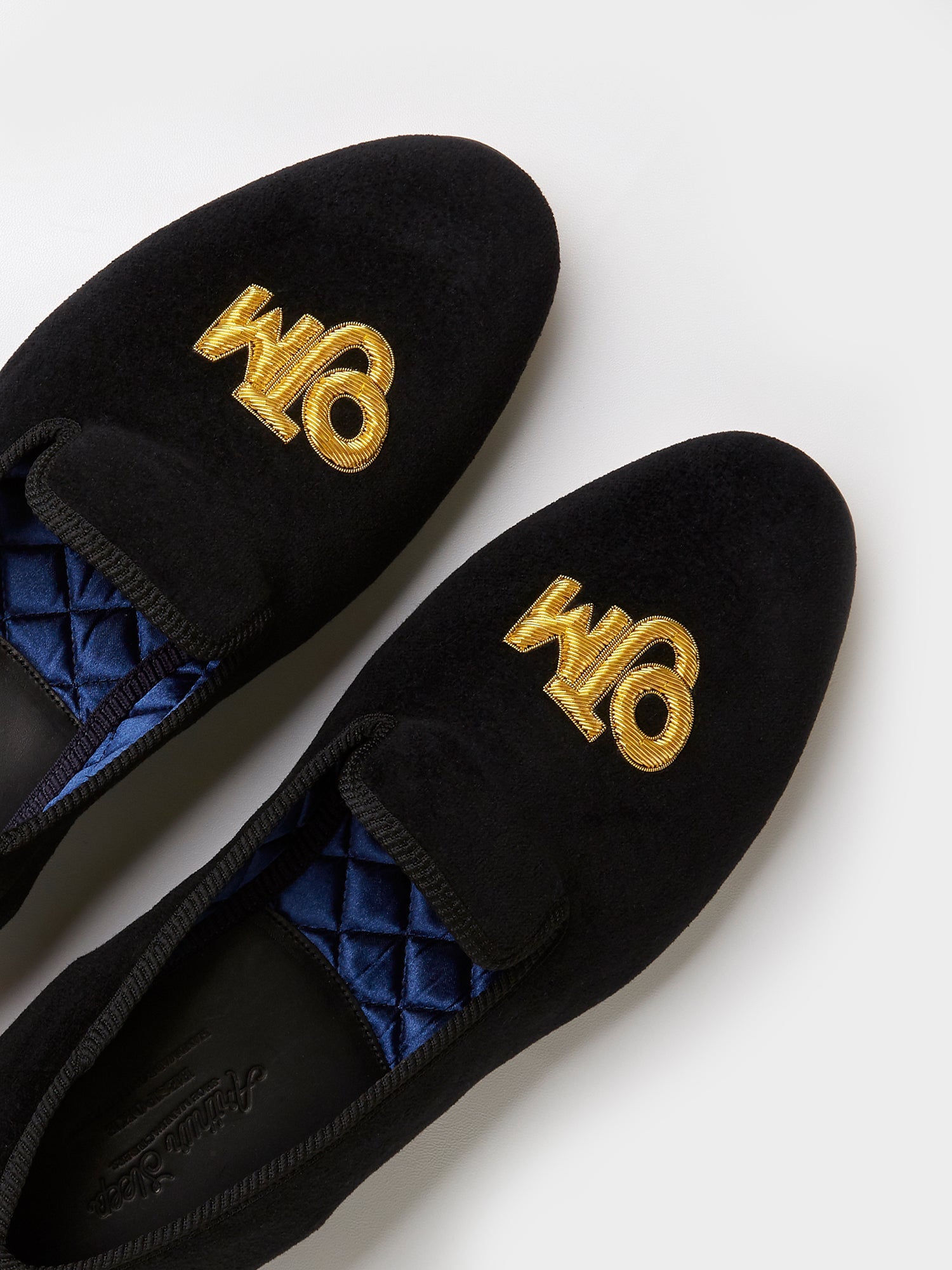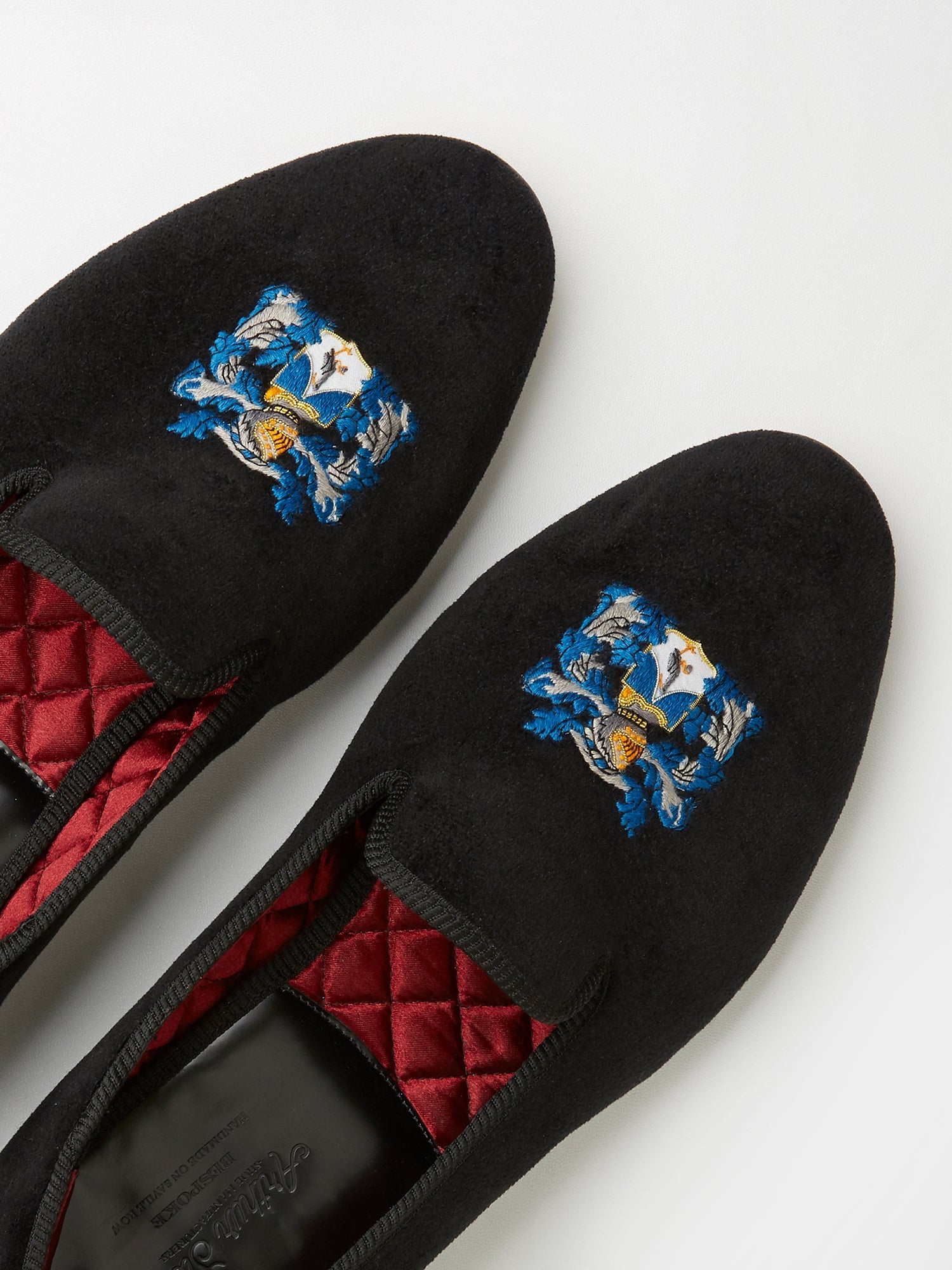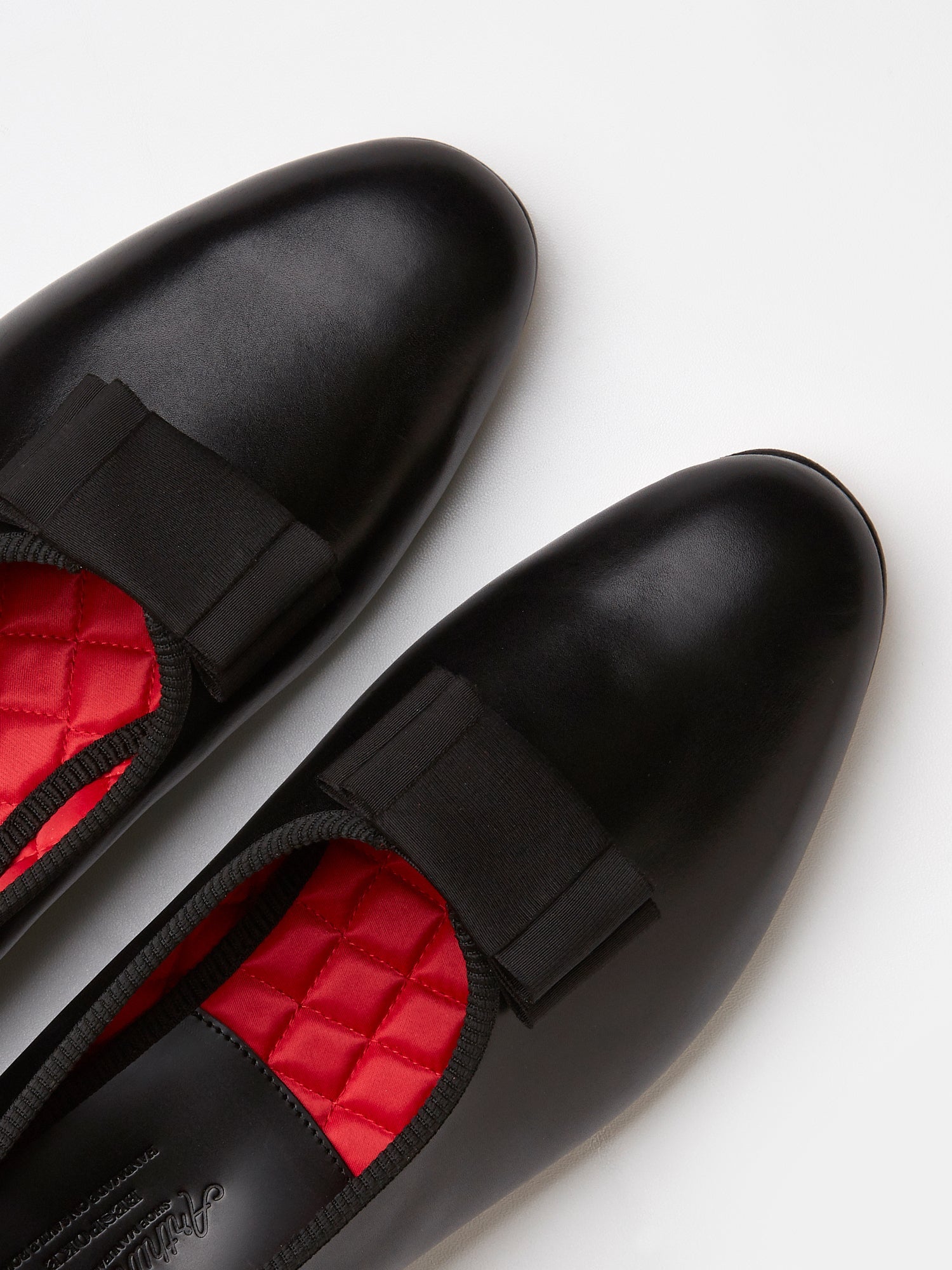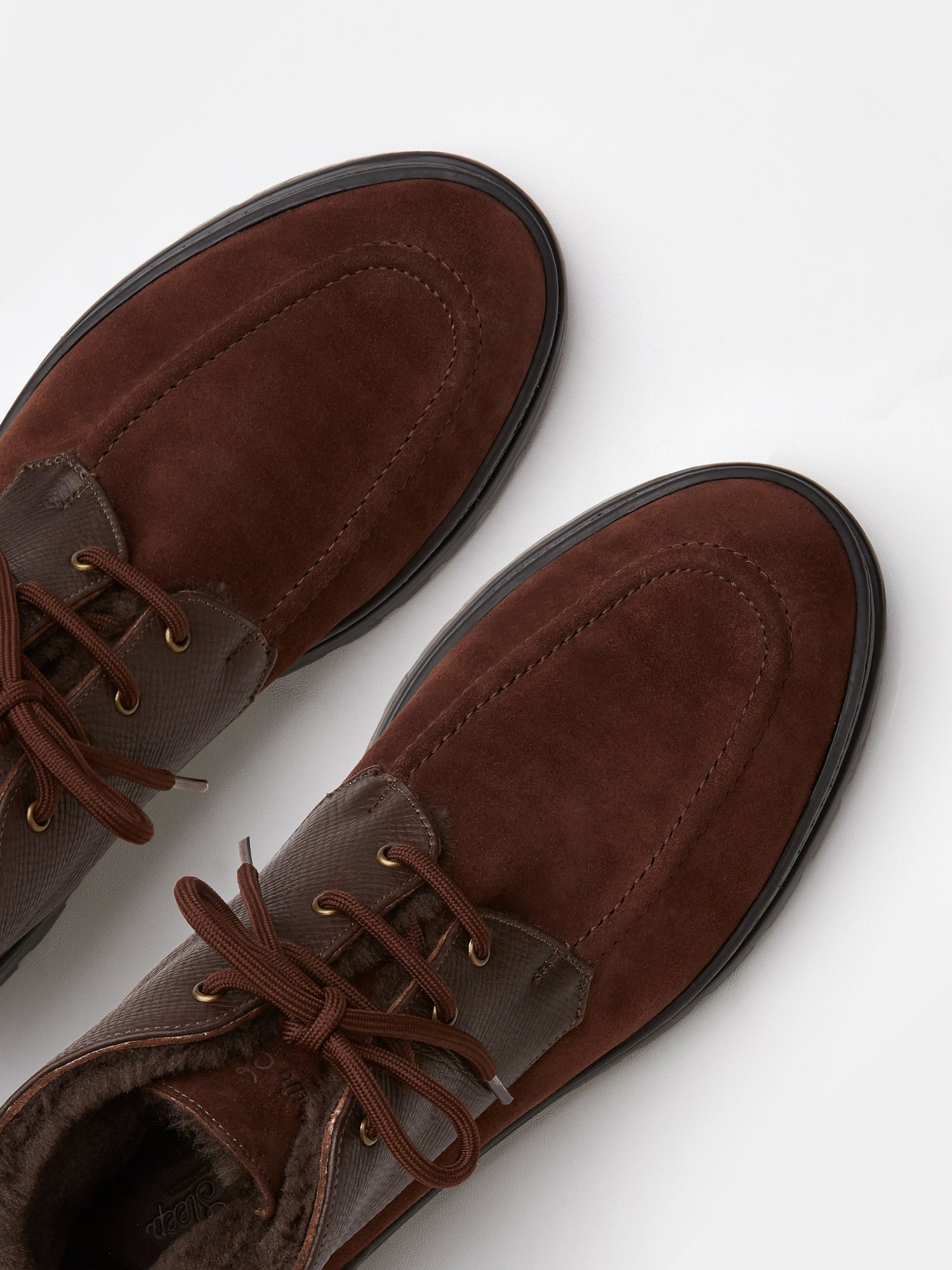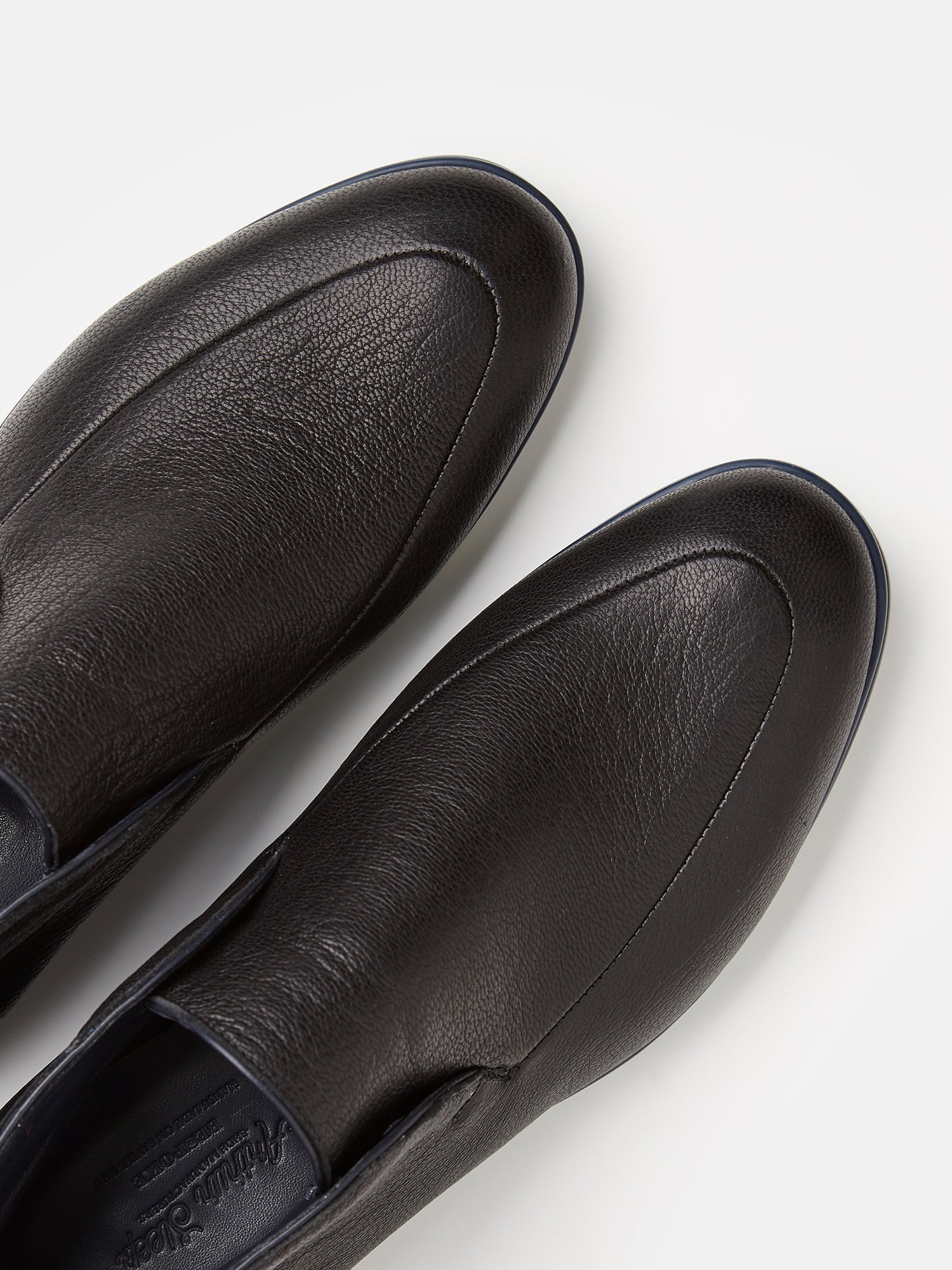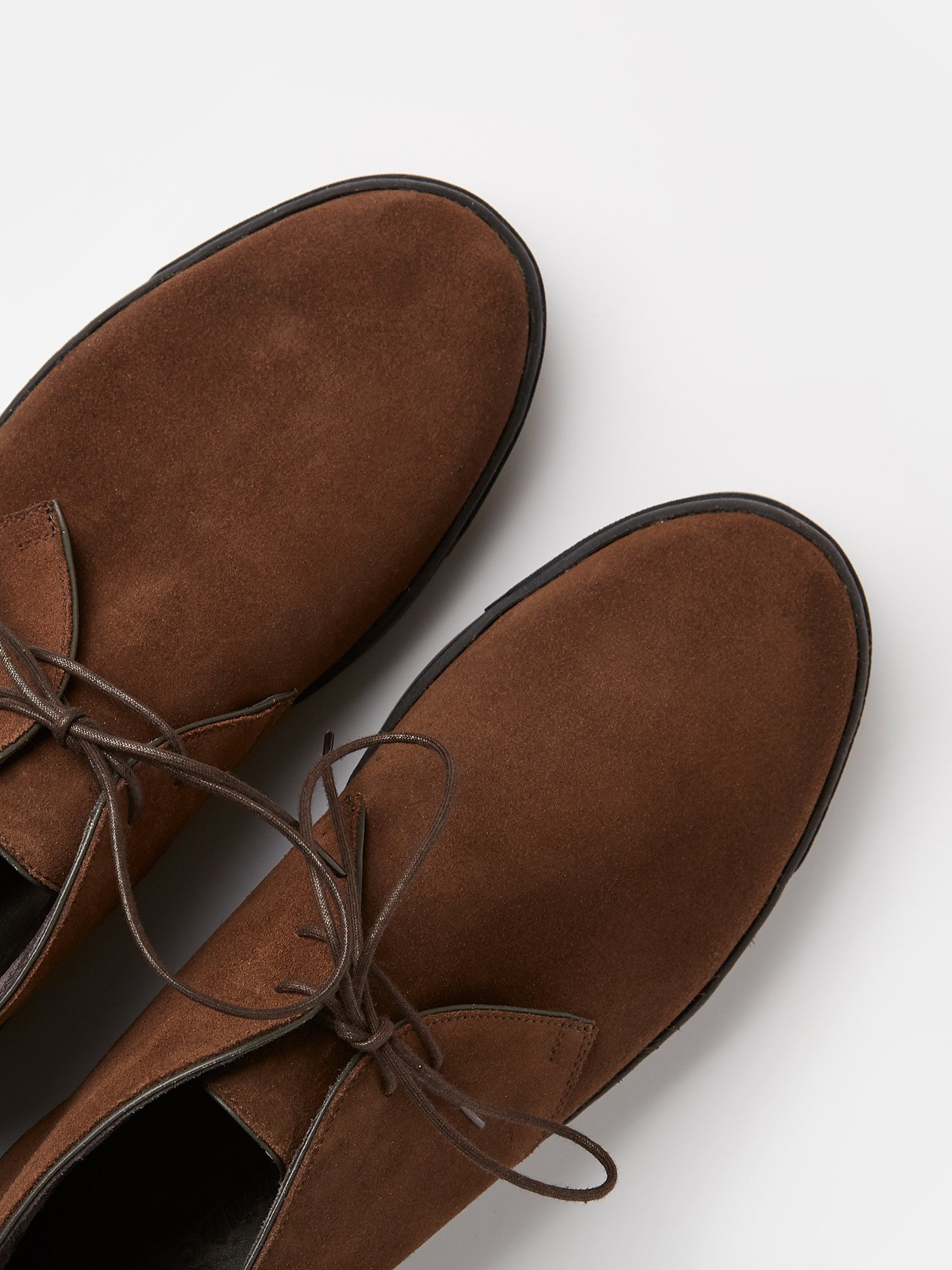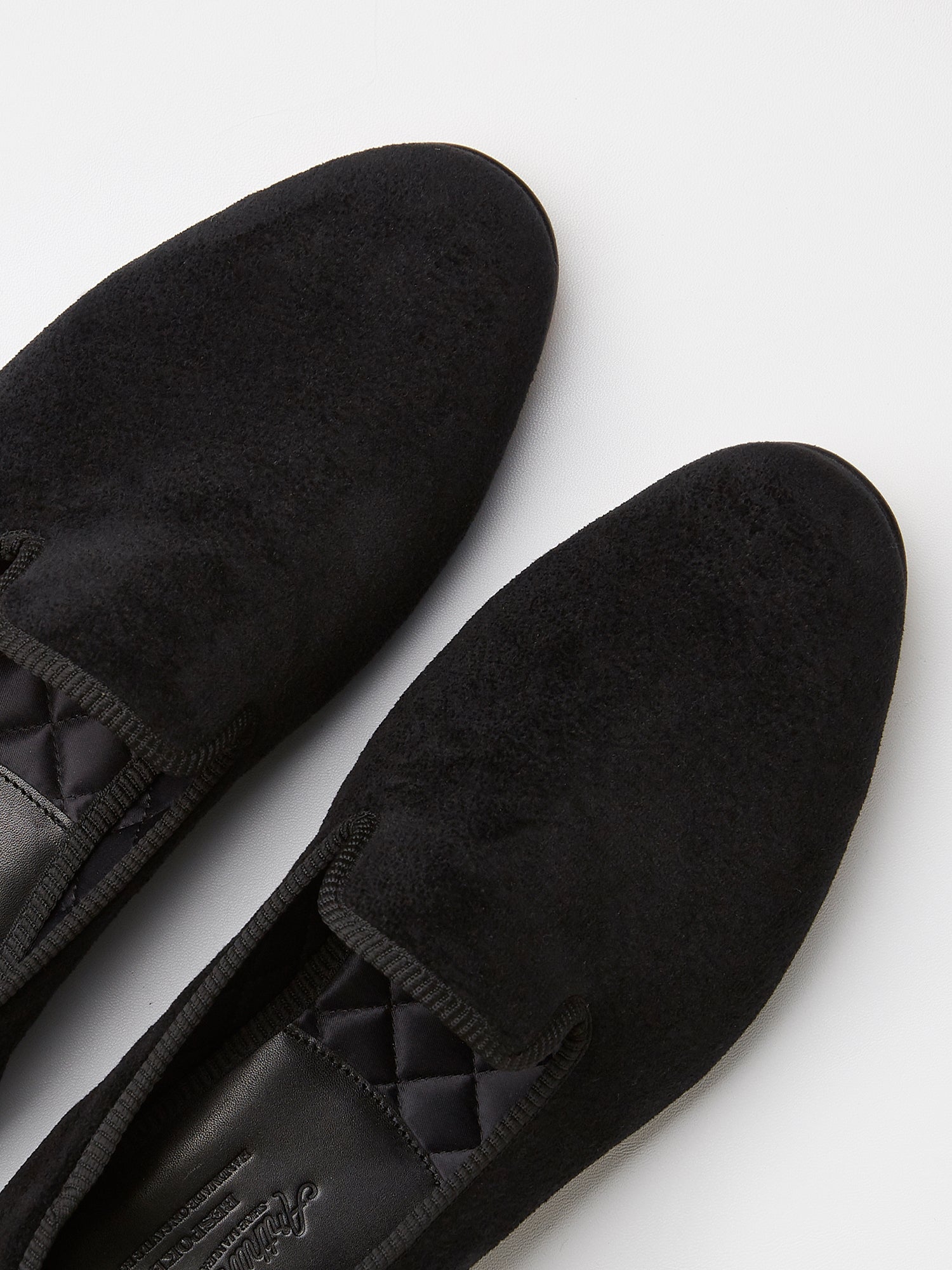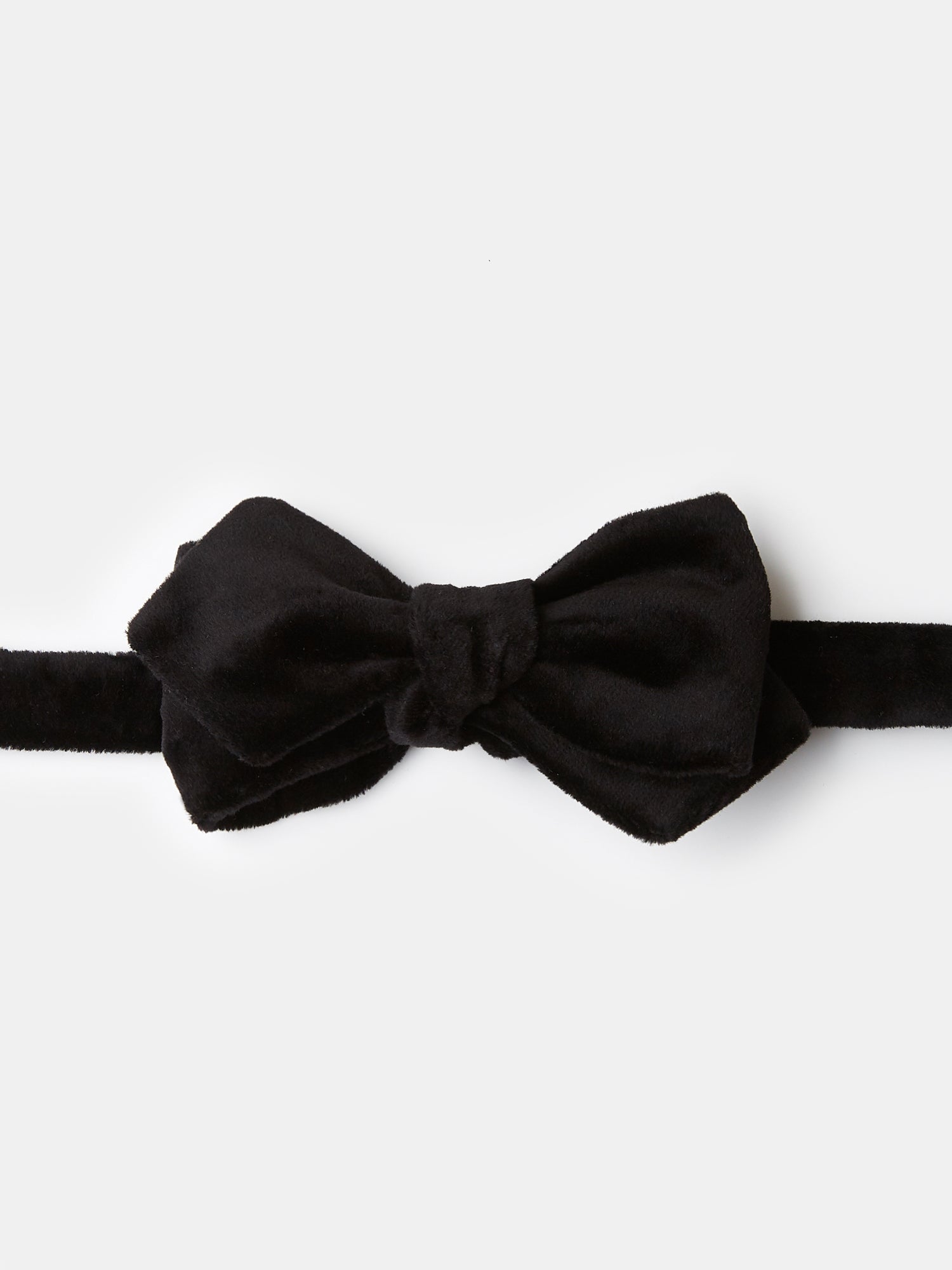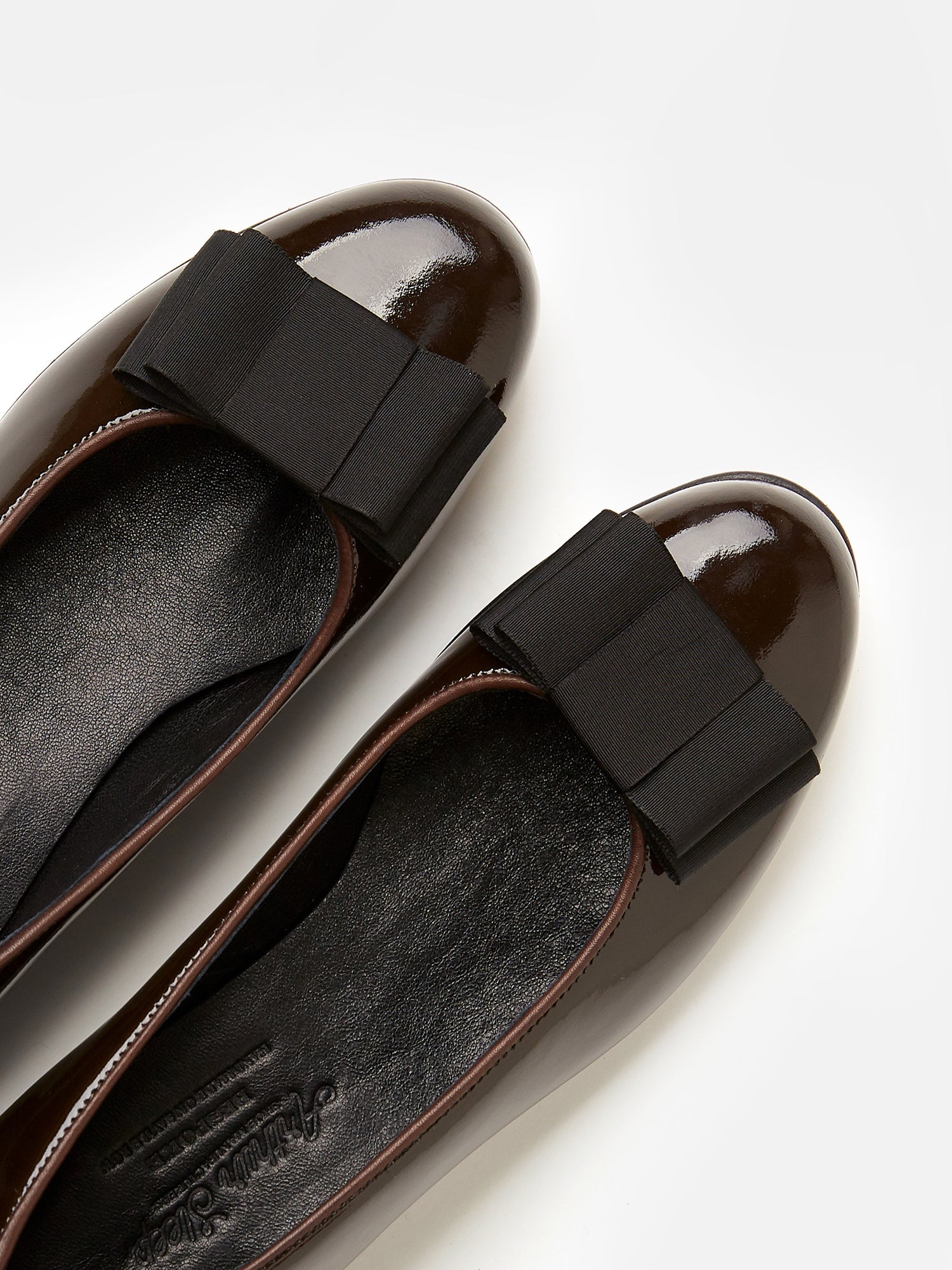The invention of the elastic sided boot, most commonly known today as the Chelsea Boot, is credited to Joseph Sparkes Hall. An early producer of rubber overshoes, Sparkes Hall was a shoe designer and maker with a workshop on Regent Street in London. He had an interest in new materials, especially rubber, and how they could be applied to footwear, which led him to experiment and invent different kinds of shoes.
In 1837, Sparkes Hall created and patented a flat ankle boot with a fashionable silhouette, but he incorporated an early form of elastic made of thin brass springs encased in cotton instead of the usual lacing along one side. His aim was to create a boot that fitted snugly around the ankle, but was also easy to take on and off without the work of buttons or laces.
It is debated if Sparkes Hall supplied the royal family with shoes before 1837, but that year he presented Queen Victoria with a prototype boot containing this early elastic, which, being fond of walking and riding, she reportedly wore for both pursuits.
While the spring-based elastic was ultimately not a success, Sparkes Hall continued to experiment, and eventually patented a boot with rubber elastic side panels in 1840. Due to Queen Victoria’s preference for elastic-sided boots, and their practicality, they became popular with men, women and children by the mid-1840s.
The V&A collection contains a pair of boots that were shown at the Great Exhibition in 1851, which are almost identical to a pair featured in Sparkes Hall’s prospectus for the Great Exhibition. This pair shows the development of the style of boot to include small heels and distinct left and right boots (instead of straights: shoes with neither a left or right that were common at the time), but their large panels of elastic, square toes, and small toe caps remained in fashion until the 1870s.
The elastic-sided boot fell out of popularity in the late 19th century, and was largely worn for horseback riding and outdoor pursuits until they were adopted by London subculture, the Teddy Boys, in the 1950s. The snug fit of an elastic sided boot at the ankle made them suitable to wear with tightly tailored Edwardian-style trousers favoured by the cohort.
The elastic-sided boot gained wider popularity again in 1961, when The Beatles chose to wear elastic-sided, cuban-heeled flamenco dancers boots made by London shoemaker Annello and Davide while on tour in Germany. The band's enormous success led to the re-popularisation of the style, which was nicknamed the ‘Beatle Boot’.
The name ‘Chelsea Boot’ also probably originated in the early 1960s, although what the name refers to is debated. The earliest use of the the name ‘Chelsea’ occurs in a late 1860s price list by a firm called Waders, which advertises mens, womens and boys ‘Chelsea Boots’, but the name does not seem to appear again as a describer for elastic-sided boots until the early 1960s. It is generally accepted that the term evolved to describe those worn by fashion-conscious aesthetes on the Kings Road in Chelsea in that period, but the earlier advertisement suggests that the term might have been a revival rather than an invention of the 1960s.
Regardless, the story of the Chelsea boot is one steeped in both London and England’s history, and this style remains extremely popular.
